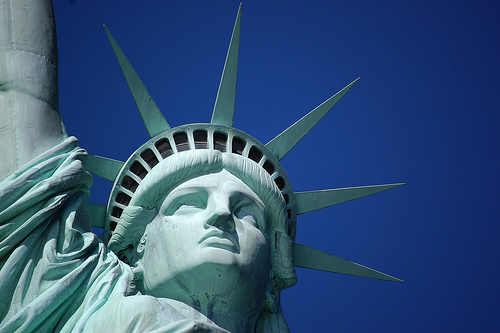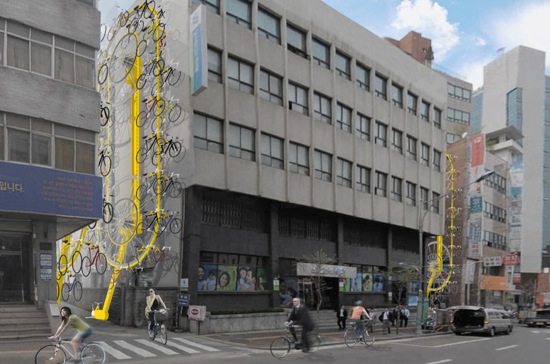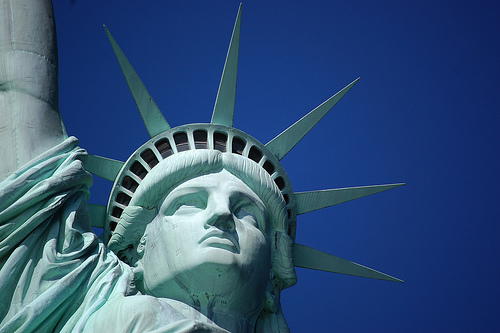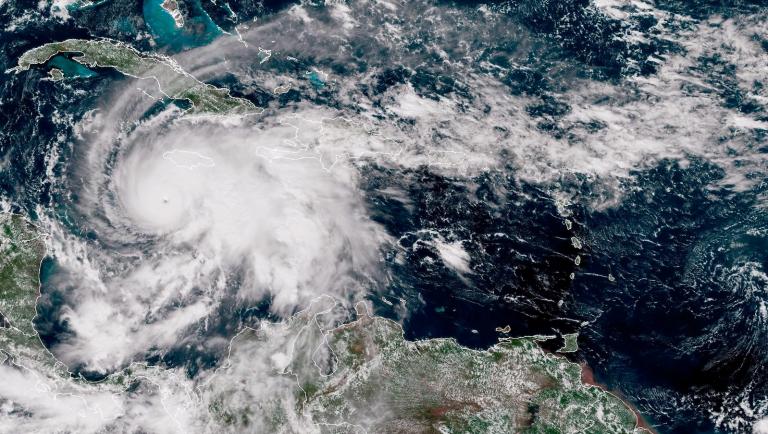 Liberty and _____ for all.Photo: Ludovic BertronU.S. politics is at an interesting inflection point.
Liberty and _____ for all.Photo: Ludovic BertronU.S. politics is at an interesting inflection point.
On one side, the American right grows ever more homogeneous: ethnically, socioculturally, and ideologically. On the other, the American left is an unwieldy coalition of minorities, unions, single working mothers, Blue Dogs, feminists, young people, knowledge workers, culture and entertainment elites, scientists, GLBT folks, environmentalists, social justice groups, Jews, Muslims, atheists, moderates, socialists … even Joe Lieberman for a while.
Precisely because it is homogeneous, the right is intense. There is no political force more potent than a privileged class in the process of losing its privilege. The right base sees itself as an Us beset on all sides by Thems; cries Michele Bachmann, “are we going to take our country back?” The status quo does not go gentle into that good night. The right speaks with a common voice, around a core set of narratives: small government, big military, low taxes, family values. Most importantly, they organize, vote, and donate.
The left, by contrast, is a contentious coalition of Thems, speaking with a cacophony of voices, often at cross purposes, perpetually less than the sum of its parts. Make no mistake: if that coalition can hold together, it will win in the end. It’s demographic destiny: The U.S. is becoming more diverse, less religious, more socially liberal, less nuclear-family, and more urban. And it’s happening faster than predicted. We’re on our way to an America with more Thems than Us’s.
The problem is, a political process dominated by the voices of the wealthy and powerful by nature alienates Thems. So a lot of the left’s natural constituencies don’t vote, organize, or donate. The core challenge for the party of change has always been how to marshal Thems into a political force that can match the intensity and influence of Us’s. It’s hard! The unfortunate (or, depending on your perspective, fortunate) fact is that there’s going to be enough middle-aged/elderly white suburban conservatives in the U.S. to bend politics to the right for decades to come if they stick together.
What vision of America’s future is broad enough to inspire and cohere the left’s fractious coalition but specific enough to distinguish it from the conservative status quo? What new narrative can turn the gaze of the country’s elite away from rosy-tinged nostalgia for frontier libertarianism and white privilege?
Bill Clinton used paint a picture of a country where, “if you work hard and play by the rules,” you can hope to … not be poor. This is the technocrat’s vision: America is a big machine for generating GDP, and if you operate as a cog in that machine and don’t make too much trouble, the machine promises not to grind you up.
But … really? That’s the best progressives have to offer? If you’re a dutiful worker, you won’t starve? True, even that modest promise is more than what’s actually on offer to working Americans these days, but it still seems awfully Orwellian. It might win assent, perhaps votes, but will it ever inspire passion?
Surely that’s not our highest aspiration for the country and our fellow citizens. Surely that’s not what America is for. Surely we can do better.
But if that’s not our story, what is? That’s the Big Question. (John Quiggin wrote a post on this, and Matt Yglesias a response, that I’ve had bookmarked for ages.) It’s not really something that can be covered in any depth in a blog post, but I have an idea or two I’ll puzzle out over the next week or so.
First, though, I’d like to hear your ideas! What’s your big story for progressives, your vision of America’s best self in the 21st century? What’s all this for?
Leave your ideas in comments, or blog them, or Facetwit them, or whatever kids do these days. (On Twitter, use hashtag: #bigQ.) I’ll offer my own answer in the next few days.



